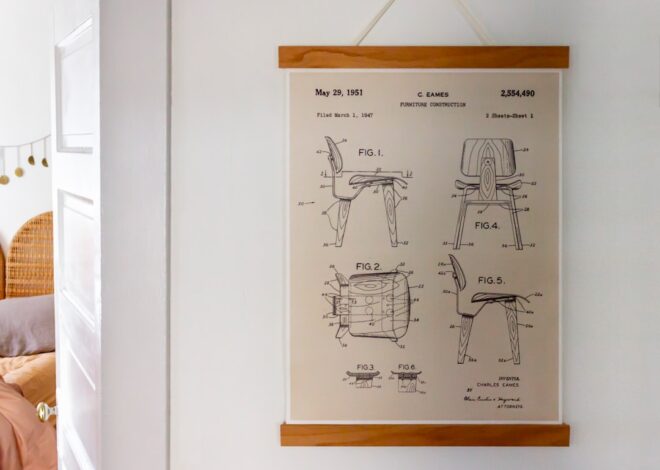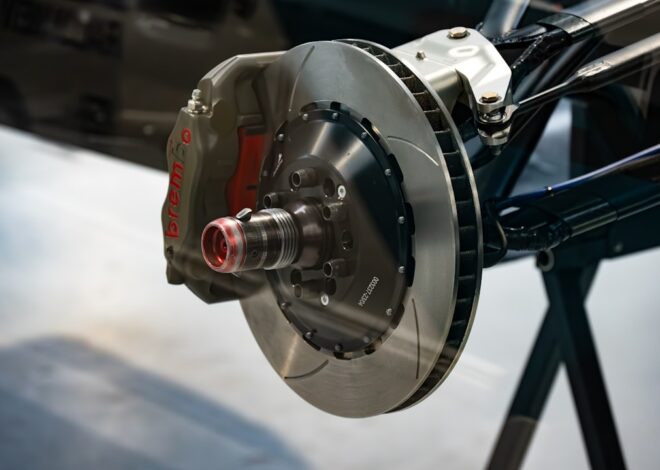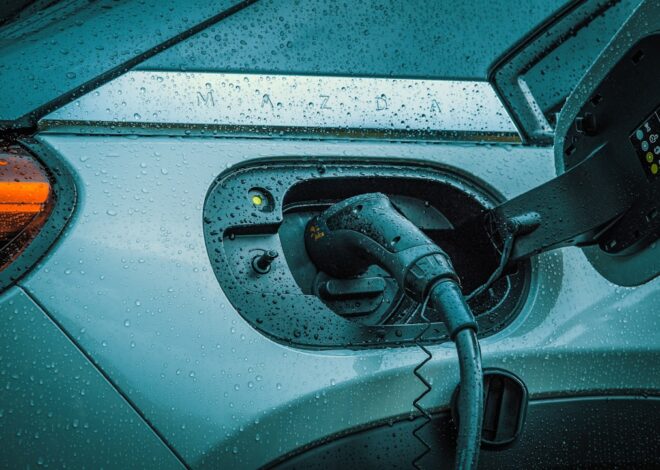
Ultimate Guide to Car Body Detailing
Car body detailing is a meticulous process aimed at restoring and enhancing the appearance of a vehicle’s exterior and interior surfaces. Unlike a standard car wash, which primarily focuses on removing dirt and grime, detailing involves a thorough cleaning, polishing, and protection regimen that can significantly improve the car’s aesthetic appeal and longevity. The detailing process encompasses various techniques and products designed to address specific needs, such as paint correction, interior cleaning, and protective coatings.
Understanding these fundamentals is crucial for anyone looking to maintain their vehicle in pristine condition. At its core, car body detailing is about attention to detail. It requires a keen eye for imperfections and an understanding of how different materials react to various cleaning agents and techniques.
For instance, the paint on a car is not just a protective layer; it is also a canvas that can be marred by environmental factors such as UV rays, bird droppings, tree sap, and road debris. Detailing aims to mitigate these effects through careful cleaning and restoration processes. Additionally, detailing can enhance the resale value of a vehicle, making it an essential practice for car enthusiasts and everyday drivers alike.
Key Takeaways
- Car body detailing involves cleaning, polishing, and protecting the exterior and interior of a car to maintain its appearance and value.
- Essential tools and products for car body detailing include microfiber towels, car wash soap, clay bar, polish, wax, and interior cleaner.
- Washing and drying your car involves using a gentle car wash soap, microfiber mitt, and drying towel to prevent scratches and water spots.
- Polishing and waxing your car’s exterior requires using a dual-action polisher, polish, and wax to remove imperfections and protect the paint.
- Cleaning and protecting your car’s interior involves vacuuming, using interior cleaner, and applying a protectant to maintain the look and feel of the surfaces.
Essential Tools and Products for Car Body Detailing
To embark on a successful car body detailing journey, one must be equipped with the right tools and products. A basic detailing kit typically includes items such as microfiber towels, foam applicators, brushes of various sizes, and a vacuum cleaner specifically designed for automotive use. Microfiber towels are particularly important as they are gentle on surfaces and effective at trapping dirt without scratching the paint.
Foam applicators are ideal for applying wax or polish evenly across the surface. In addition to these tools, a selection of high-quality cleaning products is essential. Car shampoos should be pH-balanced to avoid stripping away protective waxes or sealants.
Clay bars are also crucial for removing embedded contaminants from the paint surface, providing a smooth finish before polishing. For polishing and waxing, products containing carnauba wax or synthetic sealants can offer varying levels of protection and shine. Furthermore, tire dressings and glass cleaners are necessary for achieving a complete detailing job that leaves every aspect of the vehicle looking immaculate.
Step-by-Step Guide to Washing and Drying Your Car

The washing process is the foundation of any detailing job and should be approached with care to avoid damaging the vehicle’s finish. Begin by rinsing the car thoroughly with water to remove loose dirt and debris. This initial rinse helps prevent scratches during the washing process.
Next, prepare a bucket of warm water mixed with a pH-balanced car shampoo. Using a soft wash mitt, start washing the car from the top down, working in sections to ensure that no area is overlooked. It is advisable to rinse the mitt frequently in a separate bucket of clean water to avoid transferring dirt back onto the car’s surface.
Once the entire vehicle has been washed, it is time to dry it properly. Using a microfiber drying towel or a dedicated drying cloth, gently blot the surface rather than dragging the towel across it. This technique minimizes the risk of swirl marks or scratches.
Pay special attention to areas where water tends to accumulate, such as door sills and around mirrors. For those who want to take their drying process a step further, using an air blower can help remove water from hard-to-reach areas like wheel wells and crevices.
Techniques for Polishing and Waxing Your Car’s Exterior
| Technique | Description |
|---|---|
| Washing | Use a car wash soap and a microfiber mitt to gently wash the car’s exterior, removing dirt and grime. |
| Claying | Use a clay bar to remove embedded contaminants from the paint surface, creating a smooth finish. |
| Polishing | Apply a car polish using a polishing pad to remove fine scratches and swirl marks, restoring shine. |
| Waxing | Apply a car wax using a wax applicator to protect the paint and provide a glossy finish. |
| Sealing | Use a paint sealant to provide long-lasting protection and enhance the shine of the car’s exterior. |
Polishing is an essential step in car body detailing that aims to remove imperfections such as swirl marks, light scratches, and oxidation from the paint surface. To begin polishing, it is crucial to select the right polish based on the severity of the imperfections. For minor blemishes, a light polish may suffice, while deeper scratches may require a more aggressive compound.
Using a dual-action polisher or a rotary buffer can significantly enhance efficiency during this process. Apply the polish in small sections using an appropriate pad, working it into the paint with controlled pressure. After polishing, waxing serves as a protective layer that enhances shine while safeguarding the paint from environmental damage.
There are two primary types of wax: natural carnauba wax and synthetic sealants. Carnauba wax provides a warm glow and depth of color but may require more frequent application. Synthetic sealants offer longer-lasting protection but may lack some of the visual warmth associated with natural waxes.
Regardless of the choice, applying wax should be done in thin layers using an applicator pad, allowing it to cure before buffing off with a clean microfiber towel.
Tips for Cleaning and Protecting Your Car’s Interior
While exterior detailing often garners more attention, maintaining a clean and protected interior is equally important for overall vehicle care. Start by removing all personal items from the cabin and trunk area. Vacuuming should be done thoroughly, paying close attention to crevices where dirt tends to accumulate.
Using specialized attachments can help reach tight spots under seats and between console gaps. For fabric upholstery, consider using an appropriate fabric cleaner or steam cleaner to lift stains without damaging the material. Once vacuuming is complete, it’s time to clean hard surfaces such as dashboards, door panels, and center consoles.
A gentle all-purpose cleaner can effectively remove dust and grime without causing harm to sensitive materials like vinyl or leather. For leather interiors, using a dedicated leather cleaner followed by a conditioner will help maintain suppleness and prevent cracking over time. Additionally, applying UV protectants can shield surfaces from sun damage while enhancing their appearance.
Dealing with Scratches, Swirl Marks, and Paint Imperfections

Scratches and swirl marks are common issues that can detract from a vehicle’s appearance. Addressing these imperfections requires an understanding of their severity and appropriate correction methods. Light scratches that do not penetrate the clear coat can often be treated with polishing compounds designed specifically for scratch removal.
These products work by leveling the surrounding paint surface to blend in with the scratch area. For deeper scratches that reach beyond the clear coat into the base paint or primer, touch-up paint may be necessary. This involves carefully applying matching paint to the affected area using a fine brush or applicator pen.
After allowing it to dry completely, polishing can help blend the repair into the surrounding area for a seamless finish. Swirl marks can often be minimized through proper washing techniques and regular polishing; however, if they persist, using a dual-action polisher with a suitable pad can effectively restore clarity to the paint.
Maintaining the Shine and Gloss of Your Car’s Body
To keep your car looking its best after detailing, regular maintenance is key. Washing your vehicle every two weeks helps prevent dirt buildup that can lead to scratches or dullness in the paint finish. When washing, always use high-quality products designed for automotive use to ensure that protective layers remain intact.
Additionally, consider using a quick detailer spray between washes to enhance shine and remove light dust without needing a full wash. Another effective way to maintain gloss is through regular application of wax or sealant every few months. This not only enhances shine but also provides ongoing protection against environmental contaminants such as bird droppings or tree sap that can damage paint if left untreated.
For those who prefer low-maintenance options, ceramic coatings offer long-lasting protection with minimal upkeep requirements but require professional application for optimal results.
Advanced Car Body Detailing Techniques and Professional Services
For enthusiasts looking to elevate their detailing game beyond basic techniques, advanced methods such as paint correction and ceramic coating application can yield impressive results. Paint correction involves multiple stages of polishing using varying levels of abrasiveness to restore clarity and depth to the paint finish. This process requires skill and experience but can dramatically improve a vehicle’s appearance by eliminating imperfections.
Professional detailing services often provide these advanced techniques along with specialized equipment that may not be accessible to DIY detailers. Services such as steam cleaning for interiors or advanced ceramic coatings offer long-lasting protection that can significantly enhance both aesthetics and durability against environmental factors. Engaging professional detailers can also save time while ensuring that every aspect of your vehicle receives expert attention tailored to its specific needs.
In conclusion, car body detailing is an intricate process that requires knowledge of techniques, tools, and products designed to enhance both exterior and interior surfaces of vehicles. By understanding these fundamentals and employing proper methods for washing, polishing, protecting, and maintaining your car’s appearance, you can ensure that your vehicle remains in excellent condition for years to come.
FAQs
What is car body detailing?
Car body detailing is the process of thoroughly cleaning, restoring, and protecting the exterior of a vehicle. This includes washing, waxing, polishing, and other treatments to enhance the appearance and protect the paint and other exterior surfaces.
Why is car body detailing important?
Car body detailing is important for maintaining the appearance and value of a vehicle. It helps to protect the paint and exterior surfaces from damage caused by dirt, debris, UV rays, and other environmental factors. Additionally, regular detailing can help to preserve the resale value of a car.
What are the benefits of car body detailing?
The benefits of car body detailing include improved appearance, protection from environmental damage, preservation of the vehicle’s value, and a more enjoyable driving experience. Detailing can also help to remove minor scratches and imperfections in the paint.
What are the different steps involved in car body detailing?
Car body detailing typically involves several steps, including washing, drying, clay bar treatment, polishing, waxing, and sealing. Each step is designed to clean, restore, and protect the exterior surfaces of the vehicle.
How often should car body detailing be done?
The frequency of car body detailing depends on factors such as the vehicle’s usage, storage conditions, and the owner’s preferences. In general, it is recommended to detail a car every 3-6 months to maintain its appearance and protect the exterior surfaces.


